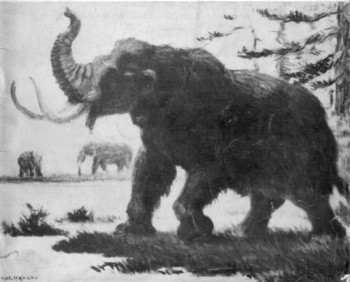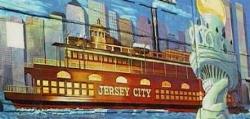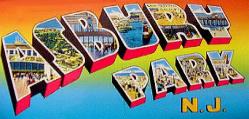 |  |  |
|
| ||
 |  |  |
 |  |  |
|
| ||
 |  |  |
|
|
By Glenn L. Jepsen
Edited by GET NJ, COPYRIGHT 2003
A few years ago the massive bones
of a young female mastodon Were
accidentally dredged up fom a
swamp in northern New Jersey. This
bulletin is a report upon the discovery and the significance of the
skeleton which is now exhibited in
the State Museum.
For hundreds of centuries mastodons, both dead and alive, have had
an effect on mail's knowledge and
imagination and history. Early tribes
in Europe, Asia, and the Americas
hunted these huge elephant-like creatures and may have helped to exterminate them, several thousand ears
ago. In more recent times the searches for mastodon remains and the
studies of them have had au influence
now largely unknown or forgotten)
on several aspects of civilization.
These old hones changed some of
the ideas of our ancestors about
science, Philosophy, art, glaciology,
geology, zoology, paleontologv, economics, mythology, religion, agriculture, humor, transportation, climatology, politics, astronomy, diplomacy, oceanography, and psychology, as well as other areas of
know ledge.
Learned and inspired scientific
advances as well as curious superstitions and outrageous hoaxes and
deliberate distortions of the truth
have been based upon long-dead
mastodons. The whole story of these
adventures in human relations would
be a long and exciting tale of scientific detection and adventure. Entirely new kinds of ideas, amounting
almost to revolutions ill thought,
and new ways of thinking about
mans place in nature were inspired
by the riddles and interpretations of
mastodon teeth and bones. Looking
backward, from our present knowledge about fossils, it is hard to realize how speculations about mastodons could have been as varied and
important and sometimes as erroneous as they were in the 18th and 19th
centuries. The science of comparative
anatomy, the fact of extinction, and
many other wholly new developments in thought were based upon
observations of these fossil animals.
At least two presidents of the United States were interested in vestiges of mastodons. Washington owned a molar tooth of one, and Jefferson personally paid William Clark
(of Lewis and Clark fame) for
bones, including some of mastodons,
which were collected in Kentucky
and filled a room in the White
House. Discussions of mastodons by
men in such high political and social
positions made the subject attractive
to many people. For decades, the
science of mastodons was a very
popular topic of conversation, and
new ideas were encouraged by this
attention. Some of our current beliefs about phylogeny, of evolutionary descent with modifications, were
developed more than a hundred years
ago by Darwin in South America
when he saw and speculated about
bones of mastodons.
 |
| 08/18/2012 11:10 PM |
|
Computer Repair Blog XP Local Area Connection stuck at Acquiring Network Address |
 Your Ancestors' Story |
 Bruce Springsteen's Jersey Shore Rock Haven! |

|
UrbanTimes.com |